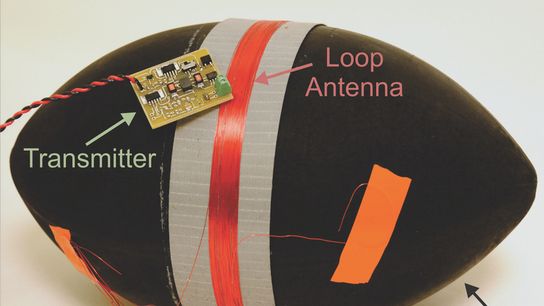They say football is a game of inches and, of course, the ultra-vague "they" are never wrong. So what does it mean when researchers find that way-more-art-than-science practice of a referee manually spotting the ball with an accompanying chain gang has a margin of error that measures stretching as far as six inches? It means games are being won and lost by a system that hasn't changed much in 100 years. And it means that, in 2014, it's time to get more sophisticated.
Vox.com has a story today about engineers at Carnegie Mellon University developing the Magneto-Track System, a magnetic transmitter planted on top of the ball's bladder.
How it works: "The ball's transmitter generates a magnetic field, which is picked up by a series of antennas edging the field. Based on the signals received by each antenna, they can calculate the ball's position in three dimensions, along with its orientation, in a process similar to triangulation."
Watch it in action below. Notice how the system tracks not only the ball, but the person carrying it. N.C. State researcher says the radio waves can see right through all 22 players' bodies.
The project is in the testing phase at Carnegie Mellon and N.C. State, with funding provided by Disney Research. Researchers envision the Magneto-Track System balls first being used for television purposes, but the officiating possibilities are obvious.
The smarter football ball is not ready for prime time yet. Not close. Researchers say the margin for error is still one full foot, basically ten miles at this scale.
One thing's for sure, though: it's coming.
